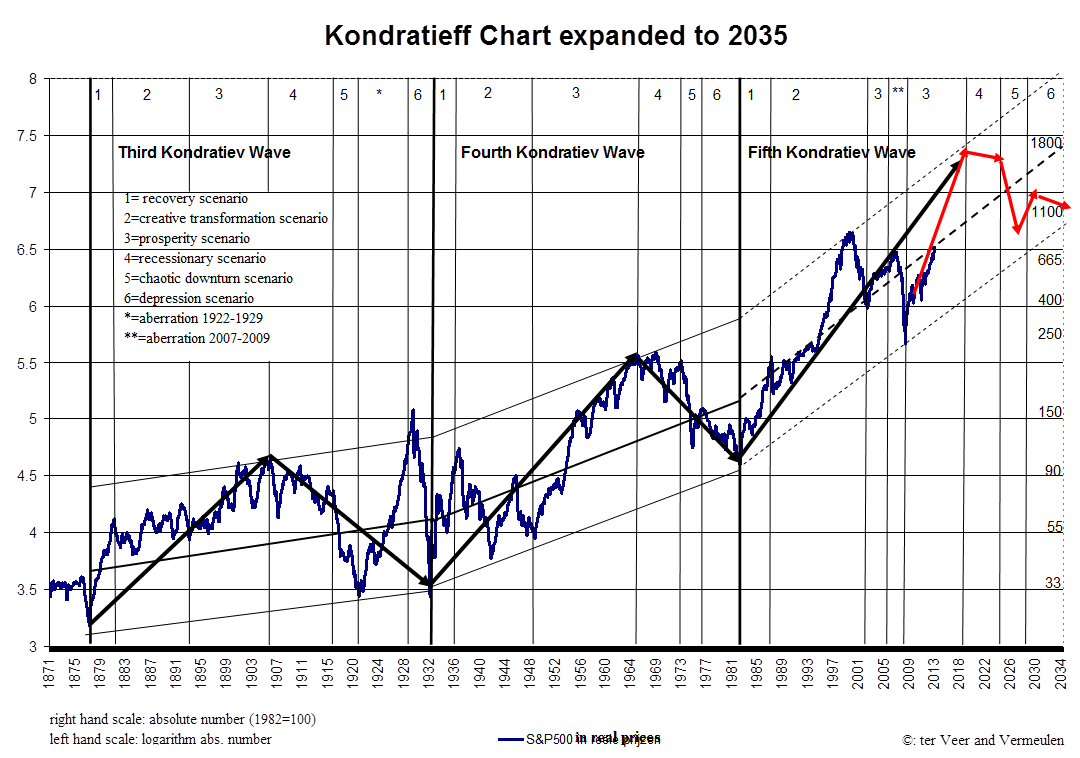It is not necessary for economic growth to
be so low in the coming years, but there are several factors why growth will be
lower in the coming years than in the last decades.
In the US
good government investing could produce more growth, in Europe and Japan
For the US
All these factors go into reverse now.
Government debt will become a disaster when
the labour force is shrinking and nominal GDP is not growing enough.
For the Emerging Markets: the big ones are
leaving stage 1 of development (Rostow) where a command economy can force high
economic growth. In stage 3 a good judicial system is necessary and less
corruption. Innovation, ideas have to trigger growth and that will not happen
in China India
(Of course I see things more positively:
demographics are not that bad in the US ,
very favourable in many Emerging Markets (ex China
and Russia Singapore ,
Hong Kong and South Korea
All important will be if productivity
growth will go down because there are no new all purpose innovations like
internet, computers, steam machine, cars etc. Gordon thinks all communication
innovations are not all purpose and will not contribute to productivity growth.
Woody and I are more optimistic. Networks are bigger than in past, there was a
knowledge explosion. But Woody thinks the innovation cycle will not lead to
fast improving productivity soon.
QE
will end badly: the unintended consequences
Woody thinks a bit like William White/ FED
governor Stein have written about the dangers of QE.
As told before by Woody monetary and macro
policy could not succeed after 2008 because there are too many targets and not
enough instruments (the failure against the Tinbergen axiom).
Since the credit crisis macro policy has to
solve many new problems (system crisis, deleveraging of private sector,
retiring baby boomers) while they initially didn’t had new instruments (QE is a
new instrument, reforms another)
Monetary policy is now excessively overused.
We have seen the benefits now of QE, but
the costs are not yet visible.
QE1 was necessary to rescue the system, but
the QE after 2009 was dangerous, not necessary in the eyes of Woody (and maybe
also of Stein).
The interest rates are extremely low, even
the long dated yields. Artificial low interest rates cause wrong investments,
can cause higher risk premiums (Stein arguments). Getting rid of QE can cause
higher interest rates than the natural interest rate over some time (Koo argument,
he thinks that is already happening now)
In normal times low interest rates will
trigger more investments and consumer spending, less saving.
But the very low rates now are creating
uncertainty about the long run. Business is now not investing more when
interest rates are going down. People are now saving more with lower interest
rates because they can’t leverage up and need to save more for their pensions
at current low interest rates (PV: you also hear that QE hurts the private
sector with the difference between the coupon yield of the bought bonds and the
deposit rate).
Zero interest rates are not necessary
thinks Woody. Other government policy is necessary: in the US
Woody agrees with McKinnon, stick with the
devil you know: hike interest rates but buy more mortgages etc. when you want
to stimulate the housing market
It was stunning that when the FED only
talked about taper of QE but didn’t do it you got already such a big market
reaction. When it really will take place markets could move more, but maybe
not, see the UK
In the UK Germany
long bond yields went down more than in the US
It looks like only the shadow banking system
is getting all the advantages of QE
The
30-Year Decline in Labor’s Share of Income
Why important: woody:
•
It deepens the “inequality” and the “hollowing out
of the middle class” stories
•
Political unrest can and will result
•
The decline logically implies a hefty rise in
corporate profits, just as we have seen
• The story
is global
Of course for an investor the importance
is: it is the main reason why equities are doing so well, why profit growth can
be higher than GDP growth (or growth of business sales)
Reasons
Why Labor’s Share Has Declined
•
Decline in the relative price of Investment Goods
•
Loss of bargaining power by labor unions
•
Impact of the rise of China
•
De-skilling of the workforce due to deteriorating
educational performance
•
Low interest rates
•
“Ludditism” and new technologies (robots will do all
the work cheaply)
But these factors will go into reverse in
the coming years. The prices of investment goods, chips are declining slower,
the bargaining power of individuals will go up, China





























